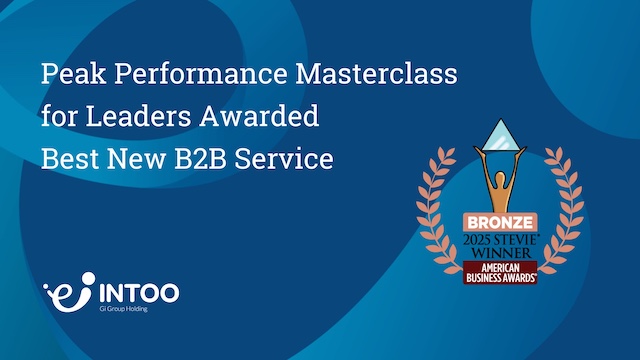When HR professionals talk about communicating layoffs, the discussion generally centers around breaking the news to departing employees. Letting someone know they no longer have a job is no easy task, which is why guides and webinars on compassionate offboarding abound to help HR professionals navigate these talks.
However, it’s just as important for companies to carefully consider how they are communicating layoffs to remaining employees. These employees also experience difficult emotions, such as fear, sadness, and anger. Moreover, they generally have to make a number of adjustments post-layoff, such as taking on additional duties and learning how to perform new tasks. Since the retained employees are the people who will play a key role in the organization’s future success, companies should take steps towards managing this relationship, getting buy-in on company goals, rebuilding trust, and boosting morale.
Here are five steps you can take for communicating layoffs to remaining employees.
1. Hold meetings with remaining employees
In the same way you plan and conduct offboarding meetings with employees who are being laid off, organize meetings with the retained employees to keep them in the loop about the workforce changes. Otherwise, these workers are left to speculate about what’s happening and wonder if they too will be let go. Lack of information fuels layoff anxiety, which a remarkable 48% of American workers experience, according to INTOO’s 2019 Layoff Anxiety Study. When employees are anxious and fearful about losing their jobs, productivity and loyalty goes down. By holding meetings and clearly communicating layoffs to remaining employees, you can forestall layoff anxiety and its effects. Your company can choose to hold one big meeting of retained employees, or arrange a number of smaller group meetings, depending on the needs of your workforce. In either case, consider using a script so you don’t forget any important details, and hold the meeting as soon as possible, preferably on the same day as the affected employees are informed, before rumors have a chance to begin.
2. Share facts about the layoff
Why the layoff is taking place. Layoffs are usually part of larger business decisions, such as mergers, acquisitions, or strategy changes. When communicating layoffs to remaining employees, make sure to share with them what these decisions are, and if possible, why they were made. Is customer demand lower than expected? Is the company stock underperforming? Are there unexpected changes in the sector or the economy as a whole? By giving employees a reason for the layoff, you’ll be able to convey the sense that the layoffs were a business necessity.
How many people were affected. Was just a single person laid off—or several departments? Give your employees a clear sense of the scope of the layoff.
Who was affected. People will see soon enough which of their colleagues are no longer around, so it’s a good idea to share the names of the people who are leaving early in the process. If the total number of people laid off by the company is relatively large, smaller meetings by department or role might be better venues for sharing information specific to that group.
How layoff decisions were made. Some of your retained employees may develop survivor’s guilt about having kept their jobs while others were let go. For this reason, unless there are legal issues keeping you from sharing this information, you might consider detailing how the layoff selection was made. If, for example, your company made a decision to let go of the newest hires, it might help your employees feel that decisions were made in a fair and unbiased manner.
What benefits were provided to affected employees. Since laid-off employees were colleagues and are friends of the employees you retain, it’s important to show your remaining workforce that the departing employees were treated well and supported on their way out. If your company provided severance packages for affected employees, share that information with your retained workforce, who will likely be relieved to find out their friends were given support such as severance pay, continued health coverage, and outplacement services to help them find a new job quickly and easily.
How the layoff will help the company move forward. While layoffs are difficult to go through, organizations perform them in order to put them in a better position to succeed in the future. Share with your employees the positive results you anticipate as a result of the workforce changes so your retained employees can feel they’re working towards a common goal.
Depending on your company’s specific situation, you may not cover all of these points. But do communicate with your employees about the layoffs as much as possible. For most people, the fear of the unknown conjures up much scarier scenarios than reality; sharing pertinent information can allay unnecessary fears when communicating layoffs to employees.
3. Allow for questions
Inevitably, your employees will have questions about the layoff. Some may be emotional ones (“How could you do this to people?”), while others more practical (“Will offices be reassigned?). Be prepared for both, and learn about how to handle emotions at work when communicating layoffs to employees.
4. Clarify changes in duties
Layoffs change the shape of an organization, often shifting the reporting structure. In addition, layoffs often require companies to reshuffle workloads, so the retained workforce can take over duties that used to be performed by laid-off employees. When communicating layoffs to remaining employees, clarify what changes have been made to the reporting structure, how individual workloads will change, and what the new expectations are.
 5. Continue to check individuals’ workloads
5. Continue to check individuals’ workloads
Even if your company does a stellar job of communicating layoffs to remaining employees on the day of the event, unexpected issues can arise afterwards. You may discover some employees’ workloads have gotten too heavy, while others have gotten too light. Some workers may have difficulty adjusting to the changes, while others may need training for new tasks they’ve taken on. To address such issues, train managers to speak to employees individually about any concerns relating to workloads and changes in job responsibilities.
How to improve productivity after layoffs
After layoffs have been made, the entire workforce is impacted. Employees that continue to work at the organization need to carry on in their roles as normal, but without some of their friends and colleagues. For this reason, productivity and morale can decline after a reduction in force, and research from HubSpot shows that only 13% of organizations return to normal within a month. In fact, 48% of organizations see productivity return within three months.
If you’re worried about improving productivity after reducing the workforce, there may be some things you can do to help it along.
Schedule one-on-one meetings
While we’ve discussed the importance of communicating with your employees after layoffs in a group setting, it’s as important that you continue to communicate one-on-one with members of your workforce. While group sessions are helpful for delivering the same message to everyone at the same time, personal meetings allow employees to ask questions they may not want to ask in a group setting. They also allow you to get a better insight into how the employee is feeling and can trigger more open and honest conversations.
Show how you value your employees
Layoffs can leave remaining employees feeling nervous about their own jobs. They can also feel undervalued or unappreciated. To boost productivity and morale, you should show your employees that you value them. And such gestures don’t need to be extravagant.
You can show appreciation by providing new opportunities that allow employees to showcase and use their skills, employee awards or recognitions, and even promotions.
Be transparent
Being transparent about particular financial aspects of the business can help to improve productivity. When the remaining employees feel that their jobs are safe and have an insight into business finances, they can feel happier at work and in their role. If you can, be open about the cost-saving methods that have already been taken or how the business is trying to bring in new customers to grow and rebuild.
What NOT to Do When Communicating Layoffs
Ramble on and on…and on…
“Avoid alienating the reader in the opening paragraph, but get to the bad news quickly.”
– Ken O’Quinn, Corporate Writing Coach
This is not the time to pad your difficult news with filler content in hopes of softening the blow. For example, refrain from leading the talk with the company’s latest ambitious business strategy or plans for a new product line. Prefacing tough news with seemingly “good” news could muddle the message and make it appear as if the news of workforce cuts are a footnote to other company news. Moreover, punctuating “good” news with the news of layoffs ends the entire message on a down note.
Instead, get to the point quickly and address the issue head on. If there is “good” or relevant news directly connected to the layoffs that will impact workers immediately–for example, increased severance packages or the offer of outplacement services–then be sure to mention these benefits and any necessary next steps. Bottom line: Your employees are adults. Best to be direct and not sugarcoat.
Use lots of flowery words
“Flowery or long answers don’t help. Use short answers and stick to the facts. People are generally smarter than executives give them credit for. So, if business conditions are bad, say that.”
— Bill Rosenthal, CEO of a Corporate Communications Firm
In 2014, Microsoft announced the largest layoff in its history at that time–which impacted 14% of its global workforce, then equal to about 18,000 employees–the media scrutinized the written memo through which Microsoft CEO Satya Nadella announced details of the labor cuts.
One critique of the memo was its use of vocabulary like “work simplification,” “integration synergies,” and “strategic alignment” to pave a roundabout way to announce the layoffs. Again, being honest and direct are key.
Contradict yourself
“Uniformity of messages is imperative… Layoffs are situations where people are more likely to have an opinion, and they’ll express it.”
— Gene Grabowski, Corporate Communications Strategist
These difficult moments are character-building for businesses. They reveal defining characteristics, or lack thereof, in a company’s leadership–one of which is poise under pressure. Without a process in place, these crucial moments can backfire, triggering unintended meaning that can twist under the pressure of public opinion.
Negativity can spread quickly, and perhaps most susceptible to this negativity are the employees who remain with the company and experience varying emotions, from resentment to guilt of surviving the layoff. Mistakes made in communicating layoffs, if left unaddressed, can snowball into low employee morale and significantly challenge employee retention.
Other helpful resources
Reference our Reduction In Force (RIF) Checklist to be sure you don’t miss an important step in the RIF process.
When laying off employees, it’s important to be prepared. Download our Layoff Notification Guide.
This handy download provides 7 Tips for Managing Organizational Change.
Layoffs are a challenging time for all involved. A lot of adjustment is required of remaining workers, and the company too is tasked with reengaging employee trust and improving productivity and retention. Following these five best practices for communicating layoffs to remaining employees will help ease the transition and set up the organization for future success.
Providing outplacement services to employees affected by a layoff demonstrates your company does its best to support its employees even on their way out. This can inspire stronger loyalty and trust in your remaining employees. Request a demo to see how INTOO’s outplacement solution, which provides employees in transition with on-demand coaching and other career transition services, can help your company with communicating layoffs to remaining employees.
INTOO’s outplacement program helps employees transition to new jobs through unlimited one-on-one, on-demand coaching from premier career counselors, resume reviews, and other career services. Learn more about how our outplacement program can benefit your company when you’re transitioning employees.


 5. Continue to check individuals’ workloads
5. Continue to check individuals’ workloads








